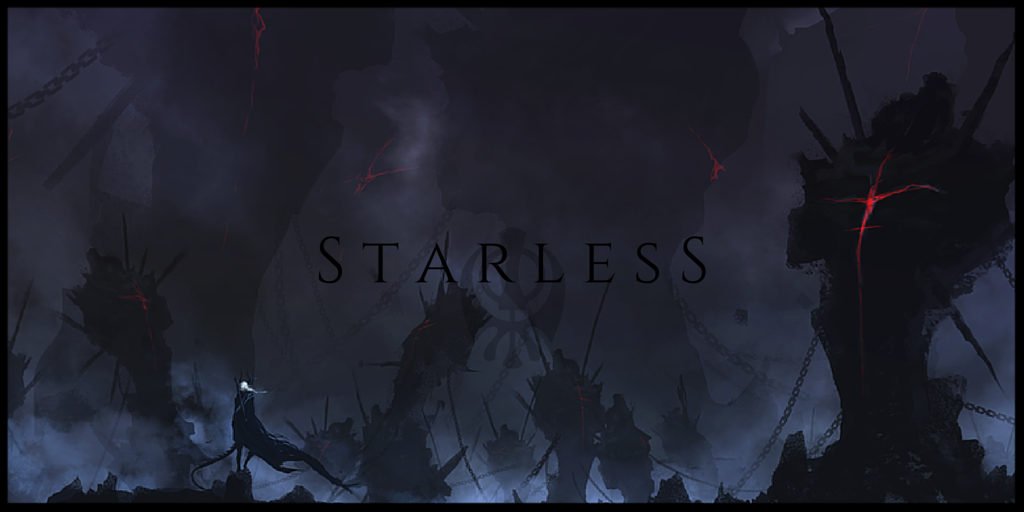@rivaan: Awesome! I'll check your changes when you post your sheet. 




A n s u r T h e F o r e f a t h e rM y t h o l o g y
Ansus has not always been. One quick jaunt through any of the historical colleges in the Heartlands and the scholars will remind you that Human-kind is not native to Ansus, rather they came from the Southern Continents after fleeing some unknown disaster.
It is here that the interpretations of Ansus' ancient history somewhat diverges. Some scholars are adamant that the current royal family is directly linked by blood to those who led the first men to the expansive land of Ansus; some are sure that the movement was pioneered by a group of tribal leaders from the Southern Continents. However, the most prevalent tale by all accounts is the 'Tale of Ansur, the Forefather.'
It is said that he was the bastard child of a Southern Queen and a rogue God, and his conception was heralded by a host of sullen angels. He is said to have emerged from the womb following the impact of a falling star from the Heavens, and he emerged with wings like tendrils of blinding light. Obviously such a story can only be the work of fiction, but it is well established that Ansur was an otherworldly child by all accounts; mastering archery and sword-fighting at an age that some say simply is not possible, and quickly rising to leadership amongst his people.
Whether Ansur was formally recognised in a state of Kinghood or not is a fact that has been lost to the winds of time, but it is well recorded that he acted as a guide and mentor to the expansive cult that formed around him, a following with such great numbers that it became a faux-nation all of it own. It is a generally accepted theory that the world before Ansur was godless and hedonistic, and that he alone brought order and fear of the Gods into his fellow Men. Some credit Ansur with the advent of civilised life; a proud accolade indeed.
However, in his thirtieth year, the land that he knew as home supposedly fell to an event that is not properly recorded. This is where the Tale of Ansur truly begins: he rallied men and women from across the land and led them through the Northern Passages, sailing through expanses of storm marred seas, trekking through hellish swamplands and battling through infestations of barbaric sub-men who guarded their lands with fury and zeal. There are countless tales and fables that stem from this period, stories of epic heroism and incredible acts of valour. It is said that the long journey through the Northern Passes took over a hundred years, many of his followers succumbing to the ravages of time, and many others bringing new disciples into the world to follow Ansur to the lands in which they could begin anew; yet Ansur himself was unfazed by time, and remained youthful for the entire century that he was at the helm of the Great Journey.
And so it was that at the end of the one hundred and first winter, a new land grew upon the horizon. Ansur's followers decided that it would be named after their leader in his honour, and to immortalise him for his undying effort to bring new hope to mankind. Ansur and his followers travelled deep into the heartlands of the newly founded Ansus, and toiled to build the Bastion of Light, a great fortress dedicated to the Gods which Ansur claimed to owe his success.
From there, the solidity of the story falters. There is little scripture detailing what became of Ansur after the creation of the Bastion of Light, but some say that he gave himself to ashes to light the Great Fire at the heart of the fortress, and there are some who believe that his spirit still resides in those holy walls, ready to return and guide the people once more.A p p e a r a n c e
"Ansur is not a giant, but his presence is felt by all. His corse is lean and strong, and his eyes pierce the very soul with naught but a glaze. The people look to him f'r strength and guidance, and he responds with valour and fortitude. He adorns himself not in gold and steel, but rather leathers and furs that he procur'd during the time he spent in his homeland; his face is ragg'd yet welcoming, and he hath the hands of a man who hath work'd his due at the forge."
- Arcillius the Scribe, year unknown.
There are many accounts of what Ansur looked like, and many of them differ tremendously. Some writings claim he was over nine feet tall and wielded a sword of holy fire, whilst others claim he was a short, stocky, stout man who was rounder than other legends would admit. While nobody can know for sure the true nature of Ansur's appearance, he is never depicted as wearing any suit of metal armour, and never adorns himself with jewels or other sightly embellishments. He is also normally depicted as hiding his face under a hood of furs, while a great hawk sits at his side. Some illustrations show him wearing a crown of dulled iron, and others with a rugged, unsightly mess of facial hair during the Great Journey.
A b i l i t i e s A n d E q u i p m e n t
Ansur is said to be like a God striding amongst mere mortal peers, a trait that some attribute to his apparent paternal figure being of divine origin. He was supposedly stronger than a Dragon (he is said to have barehandedly wrestled three such magnificent beasts to their death during the Long Journey), faster than the most mighty Jungle Stalker, and wiser than all of the Gods combined. His skill with a blade was world renowned (So incredible was his skill, in fact, that three sword-fighting styles are presently named after him) and his accuracy with a bow was as if the arrows themselves were extensions of his very being.
Some retellings of his story state that magical assaults simply did not effect him, and there are other accounts that tell of him splitting a titanic ice sheet by summoning a great, piercing flame from the sky.
Surely such tales cannot be true, but who can really know? He is a long dead man who is sure to never return to the land of his design...A g e O f L e g e n d
Ansur's mythology is one of, if not the oldest in the known world. He was extant an approximate 60,000 years prior to the present day.














